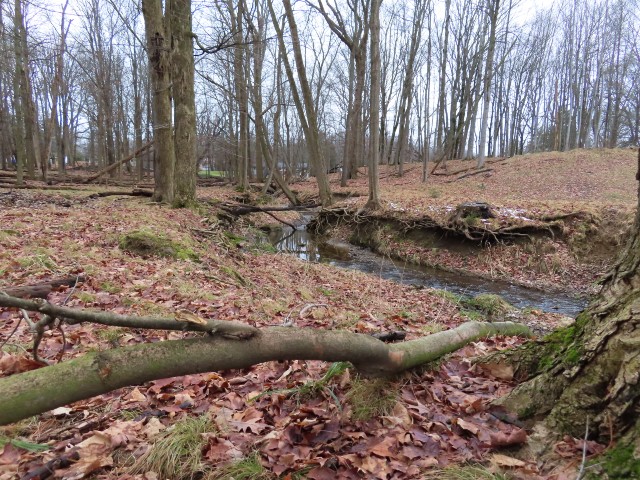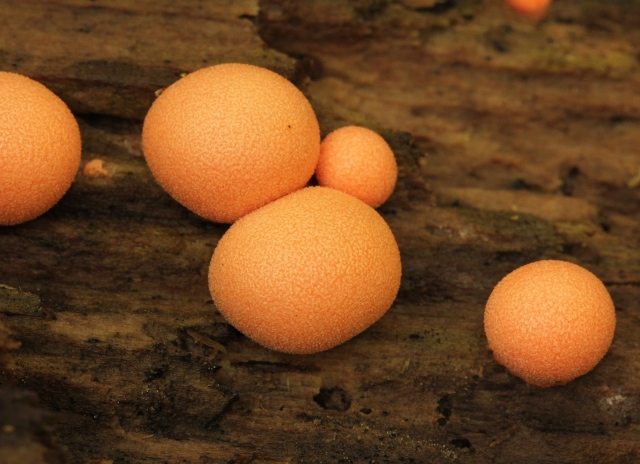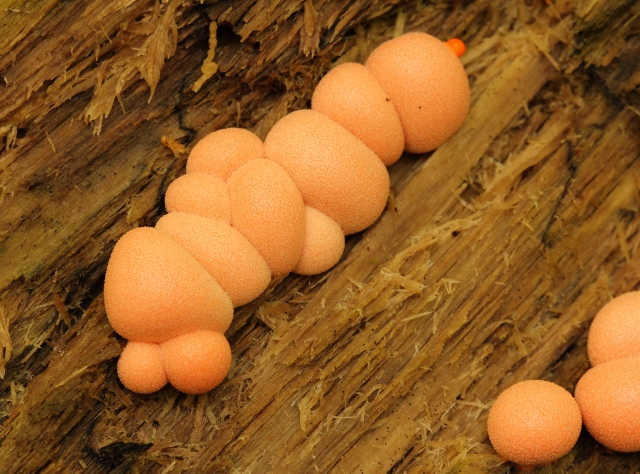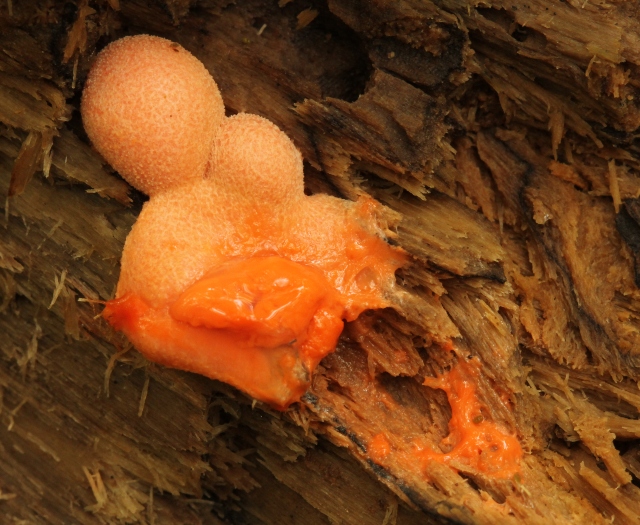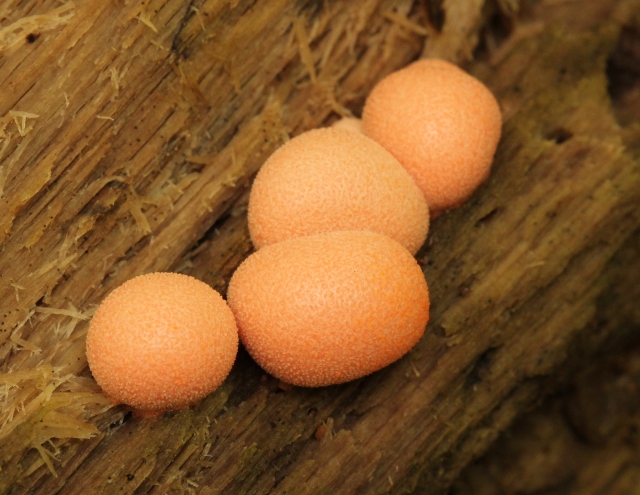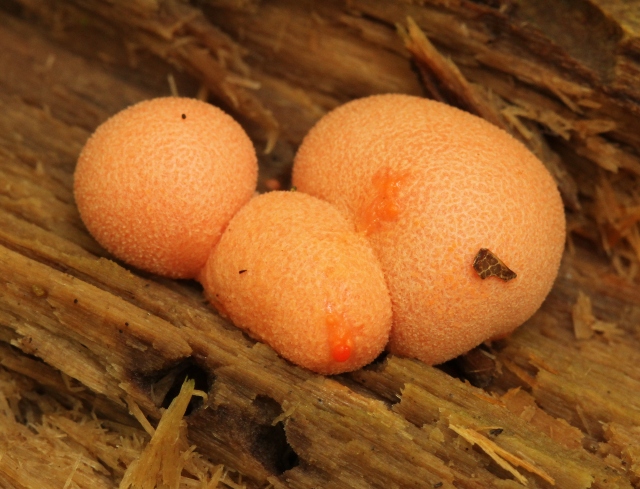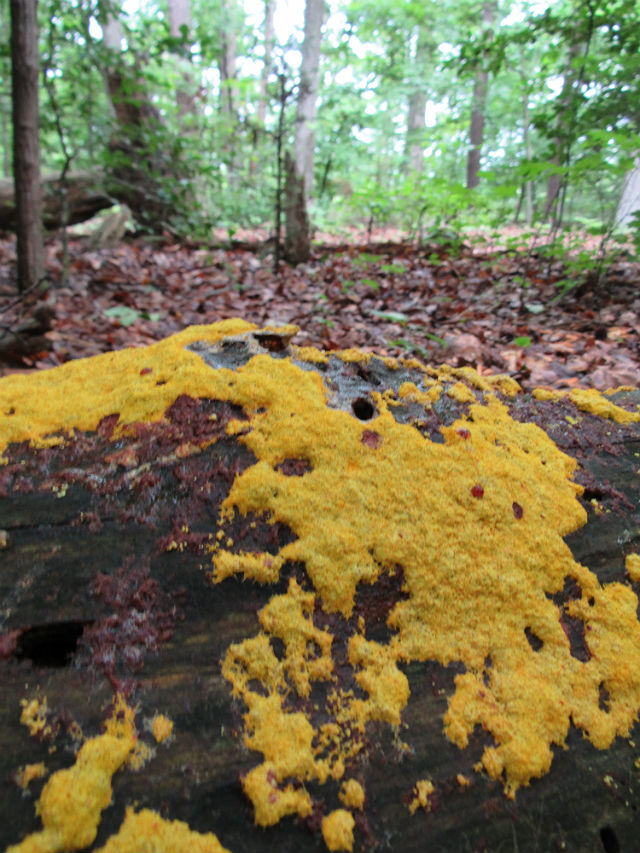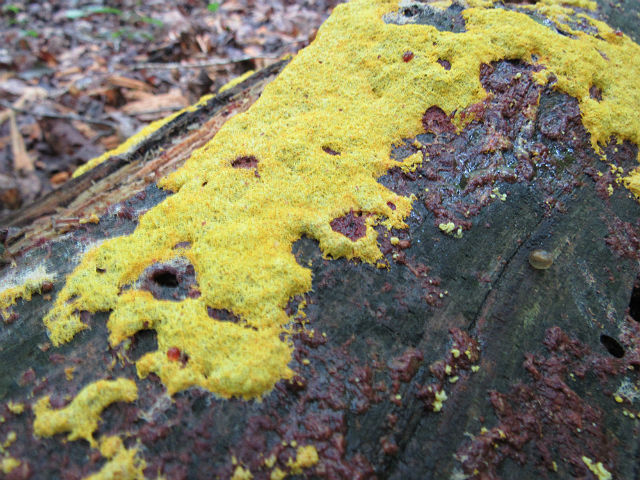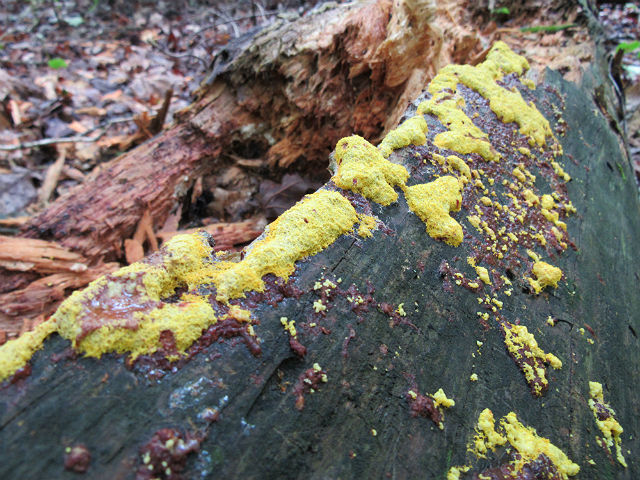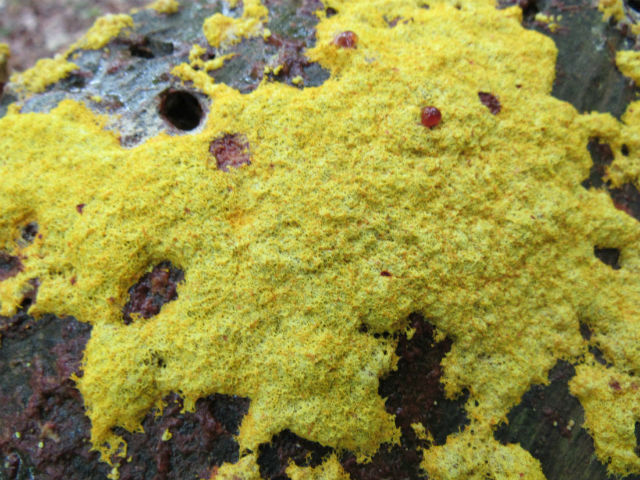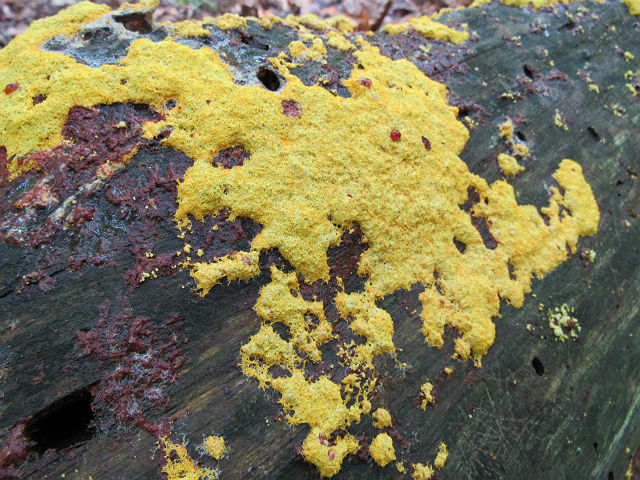While hiking in a wooded lot across the street from my house, I noticed tiny orange globs on some on the logs on the forest floor. The fruiting bodies of this organism are small in width and height – about 1/3 -5/8 of an inch.
This slime mold resembles a tiny orangish-pink puffball. Before it is fully mature, you can pop it and a pinkish-orange substance, with the texture of toothpaste, will ooze out. As the fruiting bodies age, they turn brown or purple. Found after rains on well-rotted logs throughout North America, Wolf’s-Milk Slime is probably our continent’s most frequently noticed slime mold. This species feeds on bacteria, yeasts, and fungi that colonize decaying materials such as rotting wood.
Like fungi, slime molds are interesting and strange – and well worth learning about. Slime molds are so weirdly beautiful that they have even inspired science fiction movies (such as “The Blob” in 1958). They are also studied for their unusual cellular characteristics.
Wolf’s Milk Slime Mold is a plasmodial slime mold, a group of slime molds that live part of their lives as a large single cell (from tiny to over 12 inches) containing many nuclei called a plasmodium. The plasmodium spends its time moving through the soil, under logs and over dead leaves and grass feeding on bacteria.
Thought it may seem like one, this species isn’t actually a mushroom or fungus. Slime molds, or myxomycetes are a group of fungus-like organisms that at one time were regarded as animals, then thought to be plants, and then fungi. Now, because of DNA studies, slime molds are believed to be most closely related to protozoa.
Slime molds are colorful, fanciful creatures. Blackberry, Toothpaste, Many-goblet, Chocolate Tube and Scrambled Egg Slime all have interesting stories to go along with their names. Wolf’s Milk Slime, for example, is so named because when the non-moving, reproductive structure is young, the pinkish, milky substance it secretes evidently reminded someone of wolf’s milk.

